Selecting the best timeframe for Parabolic SAR is essential for profit optimization. Short timeframes, like 15-minute charts, benefit day traders, providing quick signals but higher risk. Longer timeframes, such as weekly charts, suit swing traders with more reliable signals. Aligning timeframe with strategy enhances entry/exit points. Different timeframes require adjustments; quick decisions on shorter ones and broader perspectives on longer ones. Each timeframe choice carries risks; balancing timely signals against false alarms is key. Understanding these factors can lead to maximizing profits.
Understanding Parabolic SAR Timeframes
In the domain of technical analysis, an important aspect to comprehend is the importance of different timeframes when utilizing the Parabolic SAR indicator. The Parabolic SAR indicator offers various timeframe options including intraday, daily, and weekly, catering to different trading styles and objectives. Shorter timeframes such as intraday are suitable for traders engaging in quick trades and scalping strategies, aiming to capitalize on short-term price movements.
On the other hand, longer timeframes like weekly provide a broader perspective, aiding in trend identification and decision-making for traders with a more long-term focus.
Selecting the most appropriate timeframe for the Parabolic SAR depends on individual trading style, goals, and risk tolerance. Aligning the Parabolic SAR with the chosen timeframe is vital as it can greatly impact signal accuracy and overall profit potential. By understanding the nuances of each timeframe option and aligning them with trading objectives, traders can optimize their strategies and enhance their chances of success in the markets.
Short Vs. Long Timeframe Signals
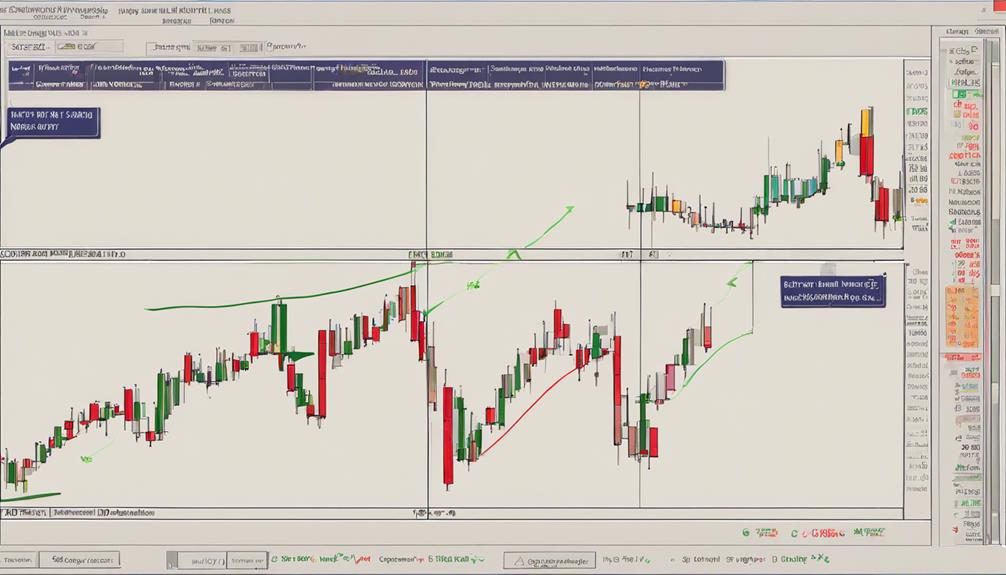
Shorter timeframes like the 5-minute chart often generate more frequent signals but can be susceptible to market noise and false indications.
In contrast, longer timeframes such as daily or weekly charts provide more reliable signals for identifying major trends and reducing false signals.
Understanding the impact of timeframe selection on signal reliability is essential for traders aiming to optimize their profits using Parabolic SAR.
Timeframe Impact on Signals
When considering the impact of timeframes on signals in Parabolic SAR analysis, traders must carefully evaluate the trade-offs between frequency and reliability to align with their specific trading objectives and risk management strategies. Shorter timeframes generate more signals suitable for active traders, while longer timeframes offer more reliable signals with less noise, benefiting swing traders and investors. Short timeframe signals may be prone to false alarms due to market volatility, necessitating quick decision-making and effective risk management. On the other hand, long timeframe signals provide a broader perspective on trends, enabling traders to capture significant price movements with reduced market noise. Selecting the most suitable timeframe for Parabolic SAR depends on individual trading goals, risk tolerance, and preferred trading style to maximize profit potential.
| Short Timeframe Signals | Long Timeframe Signals |
|---|---|
| More frequent signals | More reliable signals |
| Suitable for active traders | Beneficial for swing traders and investors |
| Prone to false alarms due to market volatility | Offers a broader perspective on trends |
| Requires quick decision-making | Helps capture significant price movements with reduced noise |
| Higher risk, higher reward potential | Lower risk, sustained trends |
Short-Term Vs. Long-Term
For traders employing Parabolic SAR analysis, distinguishing between short-term and long-term timeframes is essential to optimize signal accuracy and align trading strategies with market dynamics and individual objectives.
Short-term timeframes, like 5-minute charts with Parabolic SAR, offer quick entry and exit signals suitable for day trading. In contrast, long-term timeframes, such as daily or weekly charts using Parabolic SAR, provide more reliable signals for swing or position trading.
Short-term signals may lead to more frequent trades but are susceptible to market noise, while long-term signals filter out noise, capturing significant trends and reducing false signals. Choosing the best timeframe for Parabolic SAR depends on trading style, risk tolerance, and desired frequency of trading opportunities.
Signal Reliability Comparison
Comparing the reliability of signals between short and long timeframes in Parabolic SAR analysis reveals distinct characteristics influencing trading outcomes.
Shorter timeframes provide more frequent but less reliable trading signals due to increased market noise and price volatility, leading to a higher risk of false signals. On the other hand, long timeframes offer fewer but more accurate signals, making them suitable for trend-following strategies and avoiding choppy market conditions.
Traders looking for a higher frequency of trades may opt for short timeframes, while those prioritizing signal accuracy and robustness may prefer long timeframes.
Selecting the best timeframe for Parabolic SAR involves considering individual risk tolerance, trading preferences, and the desired trading frequency to optimize trading profits effectively.
Factors Influencing Timeframe Selection
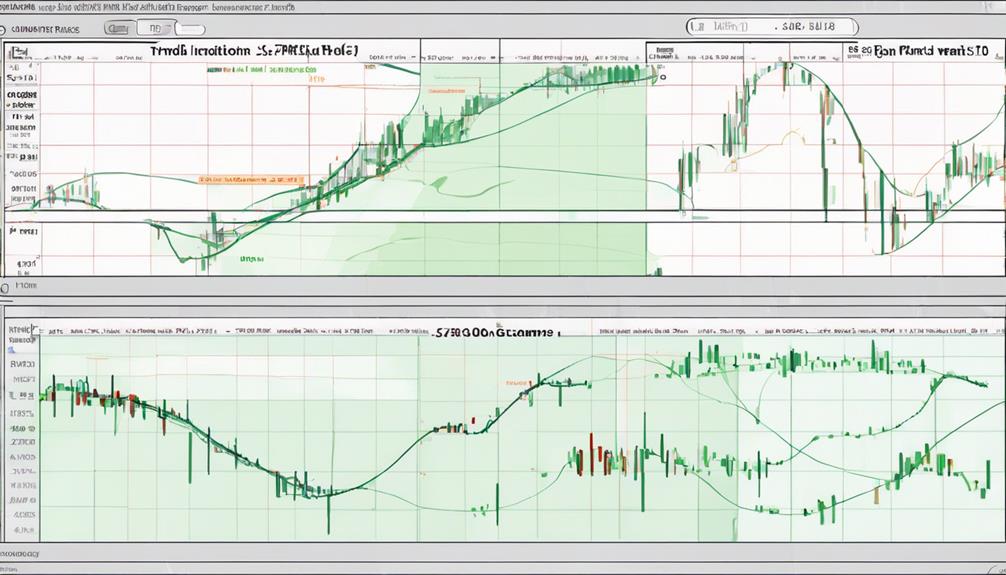
Timeframe selection in trading is an important decision influenced by several key factors. Market volatility impact, historical data analysis, and alignment with the chosen trading strategy play significant roles in determining the best timeframe.
Understanding how these factors interplay can help traders make informed decisions that enhance their profitability and overall trading performance.
Market Volatility Impact
Influencing the selection of best timeframes for Parabolic SAR, market volatility plays a critical role by directly impacting trading strategies during periods of fluctuating prices. Higher market volatility often favors shorter timeframes for Parabolic SAR, allowing traders to react swiftly to price movements.
During times of increased volatility, opting for shorter timeframes enables traders to seize quick profit opportunities and better manage risks. Shorter timeframes accommodate rapid price changes, providing a more dynamic response to fluctuations.
Adapting Parabolic SAR to shorter timeframes in volatile markets enhances trading precision, agility, and the ability to capitalize on short-term trends. This adjustment promotes timely decision-making based on evolving market conditions, optimizing profit potential in dynamic market environments.
Historical Data Analysis
Analyzing historical data in depth reveals the nuanced influence of different factors on the selection of ideal timeframes for Parabolic SAR in trading strategies. Factors such as asset volatility, trading style, and market conditions play an important role in determining the best timeframe selection. By backtesting with various timeframes, traders can identify patterns and trends that assist in profit optimization. Shorter timeframes are more suitable for scalping strategies, while longer timeframes are preferred for trend following approaches. Understanding how different timeframes impact Parabolic SAR signals is essential for maximizing profits in trading. The table below summarizes the key factors influencing the best timeframe selection:
| Factors | Influence on Timeframe Selection |
|---|---|
| Asset Volatility | Higher volatility may require shorter timeframes for effective signals |
| Trading Style | Scalpers may benefit from shorter timeframes, while trend followers prefer longer ones |
| Market Conditions | Changing conditions may necessitate adjustments in timeframe selection |
| Profit Optimization | Selecting the right timeframe is crucial for maximizing profits in trading |
Trading Strategy Alignment
Considering the alignment of trading strategies with specific timeframes is essential for optimizing entry and exit points while managing risks effectively.
When utilizing Parabolic SAR, selecting the appropriate timeframe is vital in reflecting one's risk tolerance and trading objectives. Shorter timeframes like 5-minute or 15-minute charts are suitable for day traders looking to capitalize on quick price movements. Conversely, longer timeframes such as daily or weekly charts are better suited for swing traders aiming to capture more significant price swings.
Ensuring that the trading strategy aligns with the chosen timeframe enhances the likelihood of identifying ideal entry and exit points. Factors such as market volatility, asset liquidity, and personal schedule should also be taken into account when determining the most suitable timeframe for employing Parabolic SAR in swing trading strategies.
Maximizing Profits With Optimal Timeframes
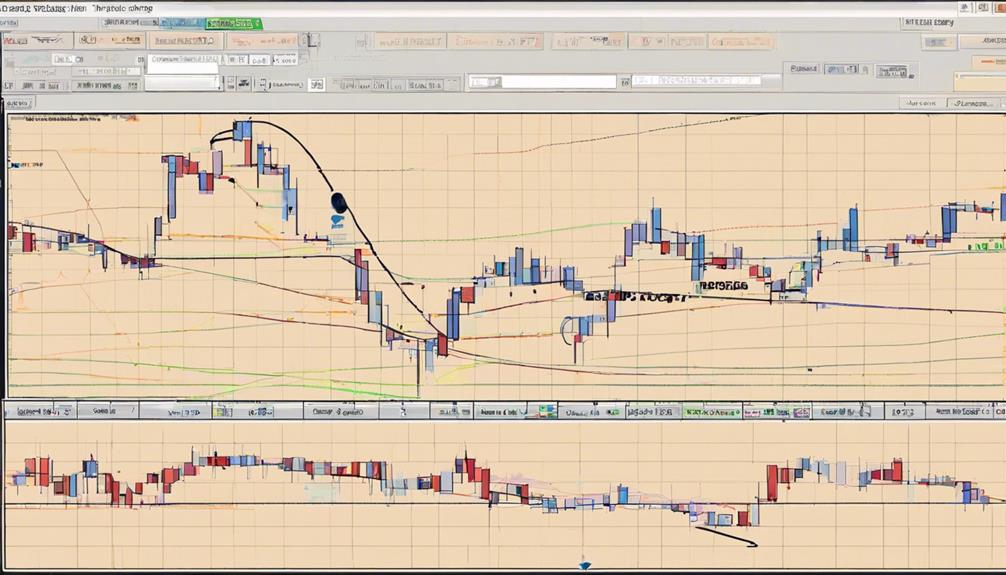
To maximize profits effectively, traders must carefully select the most suitable timeframes when utilizing Parabolic SAR in their trading strategies. For day trading with Parabolic SAR, shorter timeframes like 15-minute or 1-hour charts can provide more frequent trading opportunities and faster profit realization due to the rapid price movements within a single trading session. On the other hand, swing traders may find longer timeframes such as daily or weekly charts more appropriate as they allow for capturing larger price movements and trends over extended periods. Scalpers aiming to capitalize on quick price changes and maximize intraday profits could benefit from ultra-short timeframes like 1-minute charts when using Parabolic SAR.
Choosing the most fitting timeframe for Parabolic SAR involves aligning with individual trading styles, risk tolerance levels, and desired holding periods to maximize profit potential. Adapting to different timeframes not only helps traders align with prevailing market conditions but also enables them to adjust risk-reward ratios effectively, leading to enhanced overall trading performance and profitability.
Adjusting Strategies for Different Timeframes
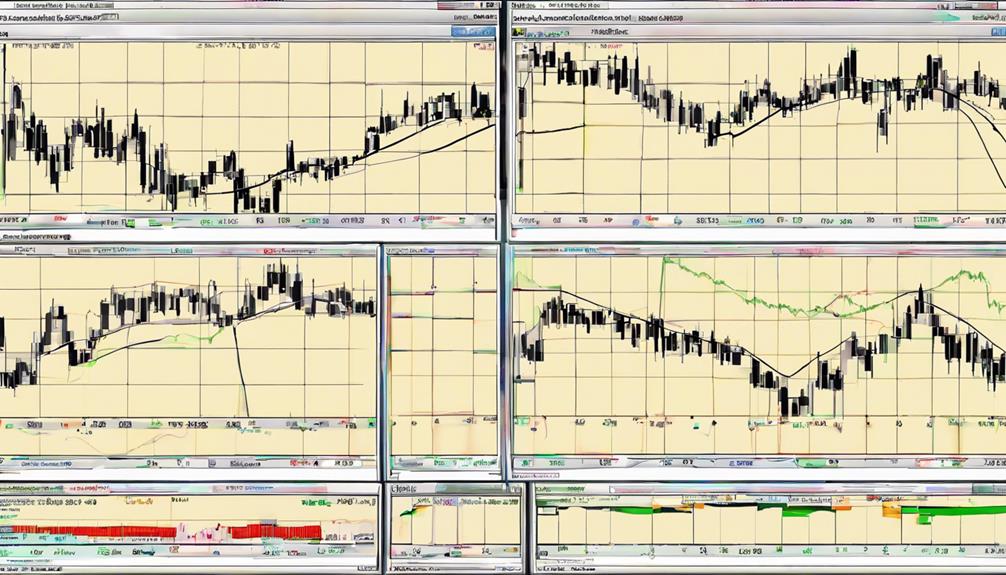
Adjusting trading strategies to accommodate different timeframes is essential for optimizing profit potential with Parabolic SAR. When considering Parabolic SAR for trading across various timeframes, certain adjustments are necessary to align with specific characteristics of each timeframe. Here are key considerations for adapting strategies to different timeframes:
- Shorter timeframes like 1-hour charts demand quick decision-making and frequent adjustments due to rapid price movements.
- Longer timeframes such as daily charts are suitable for swing trading strategies, leveraging larger price movements and extended trends.
- Scalping on 5-minute charts with Parabolic SAR requires precision and swift execution for capturing short-term profits.
- Weekly charts offer a broader perspective for trend identification and position holding in alignment with major market movements.
Risks and Benefits of Timeframe Choices
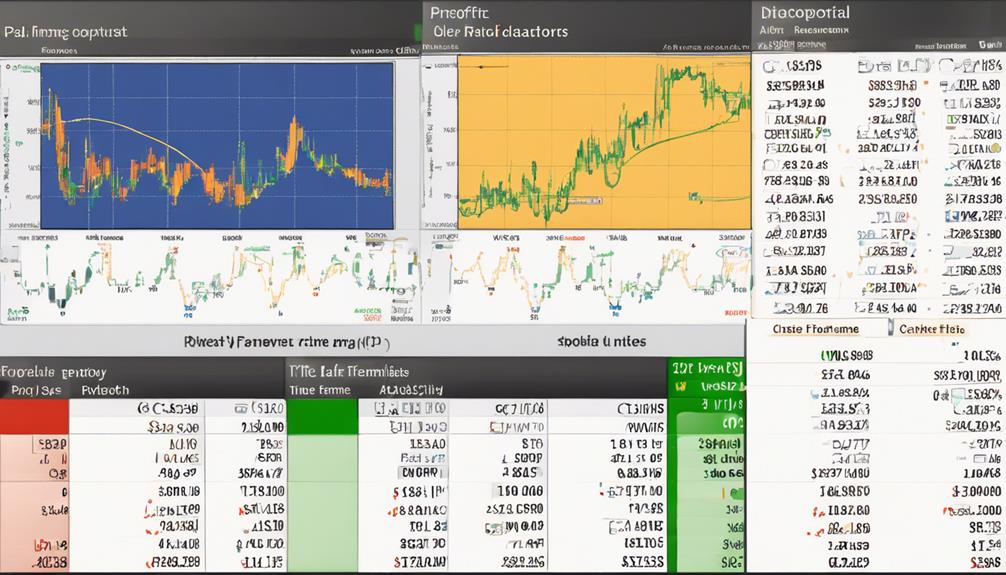
When evaluating the risks and benefits associated with different timeframe choices for Parabolic SAR, strategic consideration is paramount for maximizing trading efficiency and profitability. Selecting a shorter timeframe can result in more frequent signals, catering to day traders aiming for quick profits but also increasing the likelihood of false alarms. On the other hand, longer timeframes offer a better noise filtering mechanism, generating more reliable trend signals suitable for swing or position traders. The decision on the best timeframe for Parabolic SAR hinges on individual risk tolerance, market conditions, and trading goals. Balancing the advantages of timely signals with the risks of false signals is essential for optimizing profits with Parabolic SAR across various timeframe options.
| Pros | Cons |
|---|---|
| More frequent signals | Potential false alarms |
| Reliable trend signals | Increased noise |
| Quick profit opportunities for day traders | Less agility in responding to market changes |
| Better risk management for swing traders | Delayed signal confirmation |
Frequently Asked Questions
What Is the Best Timeframe for Parabolic Sar?
When determining the best timeframe for Parabolic SAR, factors such as trading style, risk tolerance, and desired frequency of signals must be considered. Shorter timeframes like the 1-hour chart offer more signals but may result in increased noise, while longer timeframes such as daily charts provide more reliable trend signals.
Traders often combine multiple timeframes for confirmation, using shorter ones for entry points and longer ones for trend direction.
What Is the Best Strategy for Parabolic Sar?
The best strategy for Parabolic SAR involves a systematic approach to entry signals, exit points, risk management, trend identification, volatility analysis, and indicator combination. By integrating these elements, traders can optimize trade execution and profitability.
Backtesting results play a vital role in refining the strategy based on historical data. Trade optimization is achieved through a disciplined approach that considers market conditions and individual trading preferences.
What Is Parabolic SAR Multi Time Frame Strategy?
In analyzing market trends, the Parabolic SAR Multi Time Frame Strategy employs a methodical approach by simultaneously evaluating multiple timeframes. This strategy aids in trend identification, entry and exit signal determination, risk management, and price action analysis.
What Is Profit Parabolic Strategy?
The Profit Parabolic Strategy is designed to optimize profit potential by combining Parabolic SAR with other indicators.
This strategy focuses on:
- Identifying entry points
- Implementing stop-loss orders
- Confirming trends
- Managing risks
- Generating trade signals
- Considering volatility factors
- Adapting to market conditions
Conclusion
To sum up, choosing the most suitable timeframe for Parabolic SAR can have a substantial impact on profit margins. By carefully evaluating the factors influencing timeframe selection and adjusting strategies accordingly, traders can maximize their gains.
However, the risks and benefits of different timeframes must be carefully assessed to avoid potential pitfalls. Ultimately, the irony lies in the fact that the most suitable timeframe for one trader may not be the best for another, highlighting the importance of individualized approaches in the world of trading.
